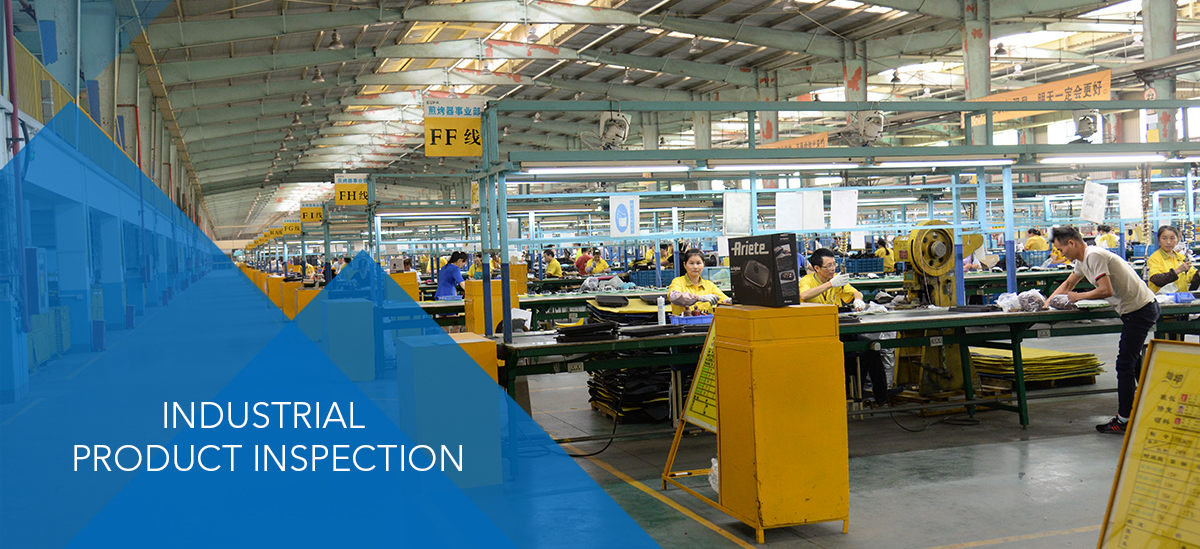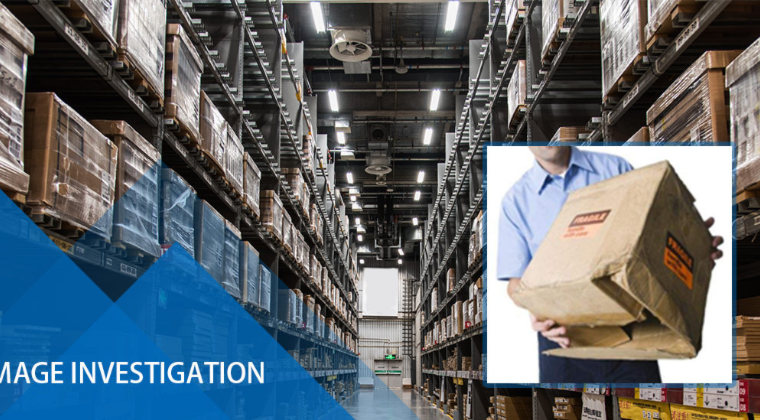Garment and apparel | Footwear | Home textile | Fabric | Bags and Luggage
Bags and Luggage has changed a lot over time. Changing consumer preferences are shaping the market. People now prioritize high-quality, durable luggage that can withstand frequent travel. Function and quality are therefore paramount.
Bags and luggage of all kinds must be durable and comply with legal safety standards, thus avoiding customer complaints, and product recalls and maintaining a persistent, trustworthy brand image.
By employing a third-party inspection agency, quality concerns will be identified and controlled at the source. GIS Inspection’s leading bags and luggage inspection services help your bags and luggage meet your quality and safety expectations.
Content
Bags and Luggage Quality Control Inspection
Bags and luggage refer to portable containers designed for carrying personal belongings, clothing, and other items. These products serve various purposes across travel, work, leisure, and fashion industries.
Processing quality control inspection is an essential part for retailers and brands to assure quality, that can identify defects and non-compliance during different stages of the luggage and bags production process. It is a systematic process to assess the quality, safety, and compliance of bags products before they reach the market.
At GIS Inspection Services, we are a trusted leader in bags inspection with a team of highly experienced inspectors well-versed in bags quality control standards. Our inspection process goes beyond surface-level checks and employs advanced equipment to assess various parameters, including material quality, stitching, zippers, seams, and overall structural integrity.
Different Types of Bags and Luggage Products we Inspect
Suitcases, luggage, and handbags are manufactured to ensure the safe transit of other personal belongings. GIS Inspection provides comprehensive quality control inspection services for a wide variety of bags and luggage, encompassing all common materials and styles.
Here are the main types of bags and luggage that GIS Inspection expertly inspects:
- Backpacks
- Handbags
- Pouches
- Wallets
- Purses
- laptop bags
- Tote Bags
- Trolley Bags
- Duffle Bags
- Suitcase
- Carry-on Luggage
- Garment Bags
- Hiking Backpacks
- Children’s Backpacks
The Importance of Bags and Luggage Inspection
In today's highly competitive global market, consumers demand not only stylish and functional bags and luggage but also consistently high-quality products that meet performance, safety, and aesthetic standards.
Whether it's a luxury handbag, a school backpack, or a rolling suitcase for international travel, product quality is central to brand reputation, consumer satisfaction, and long-term business success.
 1. Ensuring Consistency and Reliability
1. Ensuring Consistency and Reliability
Bags and luggage products involve numerous materials and components: fabrics, zippers, buckles, straps, handles, wheels, linings, and more. A failure in any of these elements—whether due to weak stitching, broken hardware, or misaligned parts—can render the product unusable or inconvenient.
2. Identifying and Eliminating Defects Early
By conducting inspections at various stages of production, manufacturers can detect issues early before mass production is completed. Early identification of stitching errors, material mismatches, incorrect logos, or weak components can save time, money, and reputational damage.
3. Compliance with Safety and Regulatory Standards
Many markets, especially in North America and Europe, have stringent product safety requirements. QC inspections help ensure that your products meet all required regulations before they are shipped, reducing the risk of customs delays, recalls, or legal penalties.
4. Protecting Brand Reputation
For high-end or designer bags, even small imperfections such as uneven stitching or logo misplacement can lead to serious backlash. QC inspections can endure the risk of negative reviews and returns.
Regulations and Standards for Bags and Luggage Quality Control
As luggage are not replaced that often, it is crucial for manufacturers to apply the standards sets by various organizations, agencies and independent laboratories to avoid any recalls and to ensure the safety and quality of its luggage.
GIS Inspection verifies the quality, specifications, functions, safety, and compliance of your bags and fashion accessories based on US, EU, and numerous other standards Types of Third-party Bags and Luggage Quality Control Inspection.
Bags and Luggage Regulations in the EU
REACH
REACH is an EU regulation that restricts chemicals, heavy metals, and pollutants in all consumer products sold in the European Union, including bags. Bag products exported to the EU are subjected to this regulation. Thus, importers must be acquainted with the compositions in bag product materials and be cautious about whether it contains excessive amounts of restricted substances.
General Product Safety Directive (GPSD)
The General Product Safety Directive (GPSD) provides basic safety standards for all products sold in the EU, even those that are not covered by specific or mandatory EN standards. Bags and luggage are applies to as well.
EN Standards
EN standards can provide useful guidelines for the design of safe-to-use products and material quality. Here are some EN standards that may be useful for bag importers and manufacturers. Note that these EN standards don’t apply specifically to bags, but materials.
- EN 14362: Methods for determination of certain aromatic amines derived from azo colorants
- EN 16483: Labelling of leather trims in textile products
Bags and Luggage Regulations in the US
CPSIA: Children’s Bags
CPSIA is a regulation regarding children’s products sold in the US market. Bags that are targeted to 12 years old or less in the US market are regulated under CPSIA.
CPSIA requires that your children’s bags, luggage, backpacks other children’s products are fully compliant with all applicable ASTM standards, substance restrictions (e.g. lead and cadmium), and other rules.
Textiles Labeling
It is obligatory for textile bags imported to or manufactured in the US carrying a permanent (e.g. nylon patch or printed) textiles label, in order to present fiber composition and care instructions of the contents. This requirement is also applied to bag products.
ASTM Standards
- ASTM D5552-10 – Standard Test Method for Resistance of Colored Leather to Bleeding
- F2153-07 – Standard Test Method for Measurement of Backpack Capacity
- ASTM F2057: Specifically for children’s clothing storage units, this standard establishes safety requirements to prevent tip-over hazards.
Types of Third-party Bags and Luggage Quality Control Inspection
The bags and luggage quality control process are a critical phase in bag manufacturing and distribution. It ensures that bags meet established quality standards, performance criteria, and safety regulations.
General Inspection Service(GIS) offers inspection services at every stage of the supply chain: from selecting new bags suppliers, through to in-process bag quality control, and final shipment.
Audits for the Bags and Luggage Industry
Factory Audit: An independent assessment of the manufacturing facility’s capacity, machinery, and workforce to determine if they can meet production demands while maintaining product quality.
Supplier Audit: Checking the company’s legal information, bank information, human resources, export capabilities, and more. The inspectors perform supplier verification audit, evaluating
Pre-Production Inspection(PPI)
GIS inspectors onsite will evaluate the first 10%-30% units produced to ensure compliance with necessary criteria, brand specifications, quality requirements which can firmly establish whether the manufacturer will be able to deliver on the promise to produce a quality product using the correct materials and manufacturing process, and orders shipping on time.
During Production Inspection (DUPRO)
Inspectors closely monitor the assembly, stitching, and construction of bags to identify any workmanship defects or deviations from the approved design. Inspectors identify and rectify any defects, irregularities, or deviations from quality standards that may arise during production.
If issues are identified, inspectors collaborate with manufacturers to promptly implement corrective actions, preventing the production of substandard bags.
Pre-Shipment Inspection(PSI)
We will select a random sample of finished bags and luggage before shipment to ensure all items conform to the established quality criteria and functional requirements. The functionality of bag features, such as zippers, handles, and pockets, is tested to ensure optimal performance.
It helps to identify any defects or non-conformities in the batch, allowing for corrections before the products reach the customer, thereby safeguarding the buyer’s reputation and minimizing the risk of costly returns or complaints.
Loading Supervision (LS)
The final but crucial step in the quality control process is properly preparing batches for shipping to destination markets. Loading Supervision (LS) is usually performed at the factory, forwarders warehouse, or port to verify count, confirm load, and seal the container.
Bags and Luggage Pre-shipment Inspection Checklist
GIS Inspection provides inspection services for luggage, backpacks and bags at every stage: from supplier investigation, audit to the quality control, and final delivery of shipments during the process.
GIS’s quality experts understand the customer’s requirements, ensure that on-site inspections are properly performed on-site, and finalize clear reports to explain and explain all details.
An effective inspection checklist for luggage, backpacks and bags is essential to ensure that these products meet quality standards and customer expectations.
Below are the essential inspection checklists for pre-shipment inspections to manage luggage and bags quality:
1. Quantity Verification
Accurate quantity verification prevents logistical issues and ensures that the client receives the correct number of products. By comparing booking and actual quantities, GIS inspectors check products and shipping cartons to verify that total quantity matches the order confirm the total quantity matches the order.
2. Workmanship Inspection
The inspector will select a sample size according to the statistical sampling procedure ISO 2859-1 and the AQL sampling, and conduct a visual check for any damages and flaws in workmanship and classify them as major, minor, or critical defects.
Check the stitching quality for any loose threads or irregularities and structural integrity sagging or unaligned components.
Learn more about AQL Sampling: https://www.gis-inspection.com/post/how-to-use-aql-for-quality-control-inspection
3. Product Description Verification
GIS Inspection will to verify that the products conform to the specifications against PO, photos, and sample.
Style Consistency: Verify that the bags style matches the approved sample and the client’s design specifications. This includes checking the overall design, materials, and color.
Material Verification: The very foundation of a well-made bag lies in the quality of the materials used in its construction. Inspectors meticulously scrutinize the materials, whether they are fabrics, leather, or synthetic materials.
The aim is to ensure that these materials are of high quality, free from defects, and suitable for the bag’s intended use. Poor-quality materials can lead to premature wear, tear, and ultimately, dissatisfaction among consumers.
4. On-site Test
The selected sample will undergo rigorous testing to ensure that it functions properly and meets safety standards.
The essential tests performed by our inspectors during an onsite inspection of luggage and suitcases:
• Adjustable check for the bag with adjustable straps
• Loading Check
• Fitting check
• Colorfastness test
• Handle/straps strength check
• Loading check on a case
• Walking check
• Waterproof
• Odor and mildew check
• Hand feel check
• Drop test
• Assortment check
• Coating Adhered Test
• Color shading check
• Function check
• Reliability test for Zipper/button/snap or any other functional component
• Product Size / Weight measurement
• Barcode scan check
• Strap length per size
• Metal detection
5. Packaging Inspection
Proper packaging and labeling protect the product and provide necessary information to retailers and consumers.
GIS inspectors will check the packing method, retail package artwork, correct content, and quantity within the package to ensure that everything is accurate and safe for transportation. Inner and outer packaging are inspected to ensure that they meet client specifications, with results provided in the footwear quality inspection report.
Bags and Luggage Quality Control Inspection Report
After performing the quality inspection in the factory, the inspector prepares the draft report on-site and reviews with the factory manager. The draft quality inspection report is a first overview of the shoes’ quality. It is made to show the manufacturer the main findings while the GIS QC is still in the factory.
The final bags and luggage quality inspection report is very detailed in:
- Every single defect, non-conformity and conformities are mentioned and explained;
- All the tests performed are listed;
- Pictures of each finding are shown in order to ensure a clear understanding of the situation from the buyer;
The final bags inspection report will be checked in detail by the GIS Inspection supervisor before being sent to the buyer. The objective is to ensure all the specifications have been verified, all the tests have been performed and the explanations are clear.
Check a bags and luggage quality control inspection report!
DOWN A QUALITY INSPECTION SAMPLE REPORT
GIS Inspection detailed inspection reports and continuous support help you improve processes, take corrective actions, and maintain quality.
GIS Inspection Quality Control Services in China and Asia
General Inspection Service is a leading third-party quality control inspection company in China and Asia, we specialize in offering comprehensive quality control and inspection procedures specifically tailored for the luggage and bags industry including handbags, travel bags, backpacks, golf bags, purses, wallets, laptop bags, and more.
Our expertise spans the entire manufacturing process, from meticulously assessing the quality of raw materials to conducting thorough inspections of finished products. By adhering to the necessary quality standards and specifications for safety, reliability, and performance, we ensure that every item meets the highest quality benchmarks.
Contact us for a chat about bags inspection now and see how we can support you with monitoring the quality of your bags and luggage!








